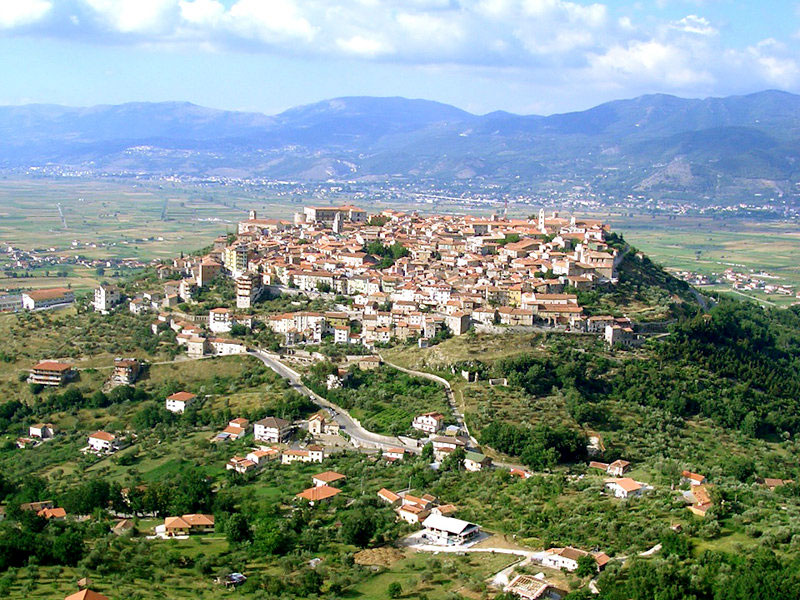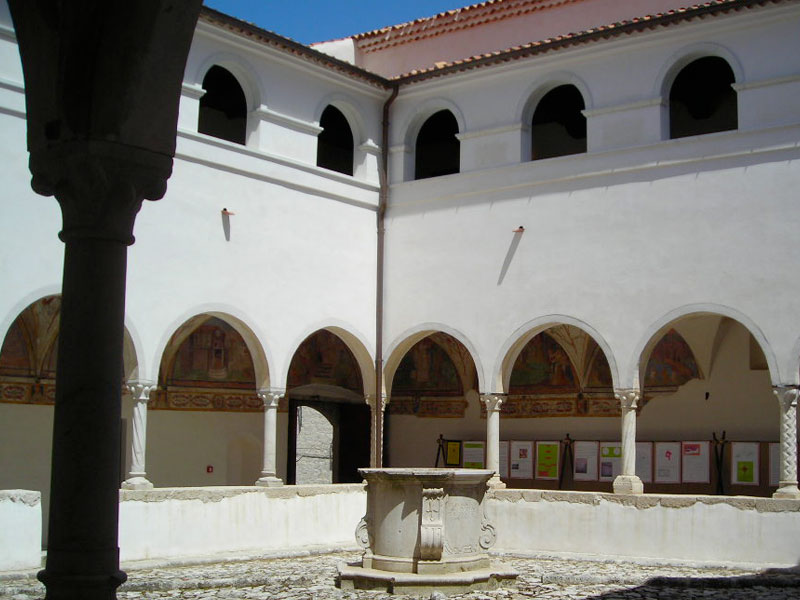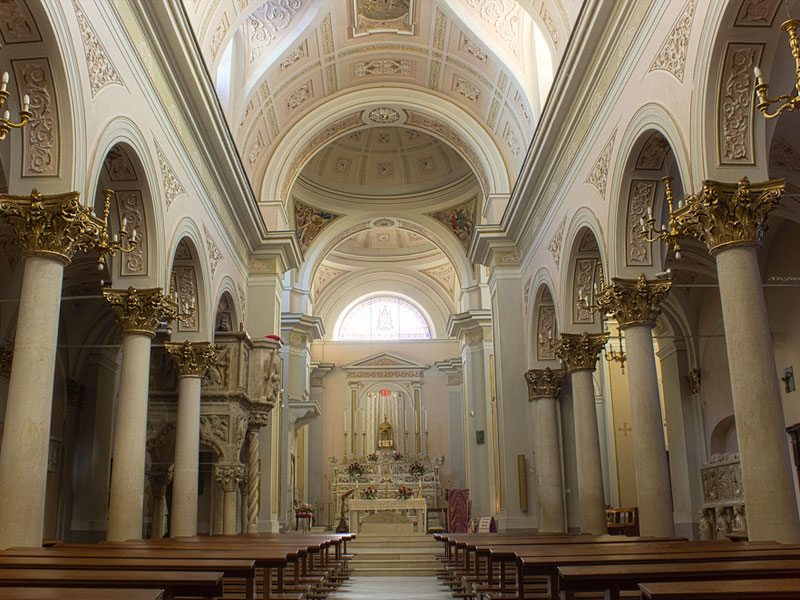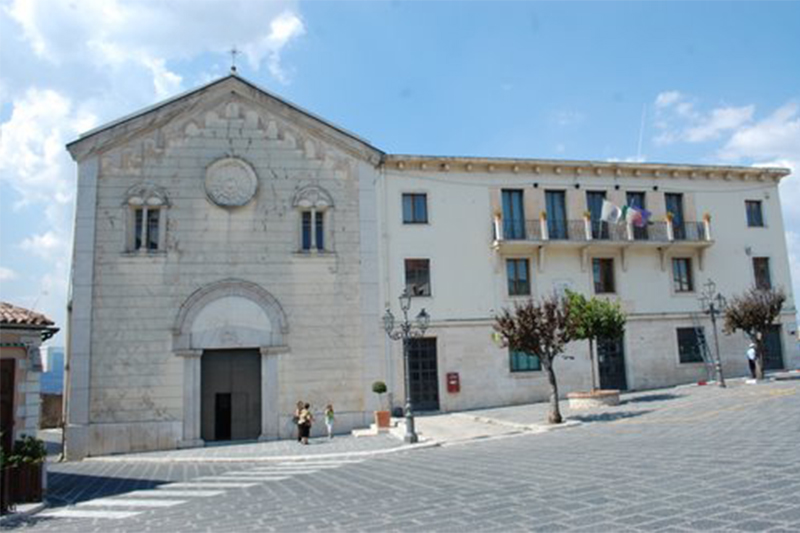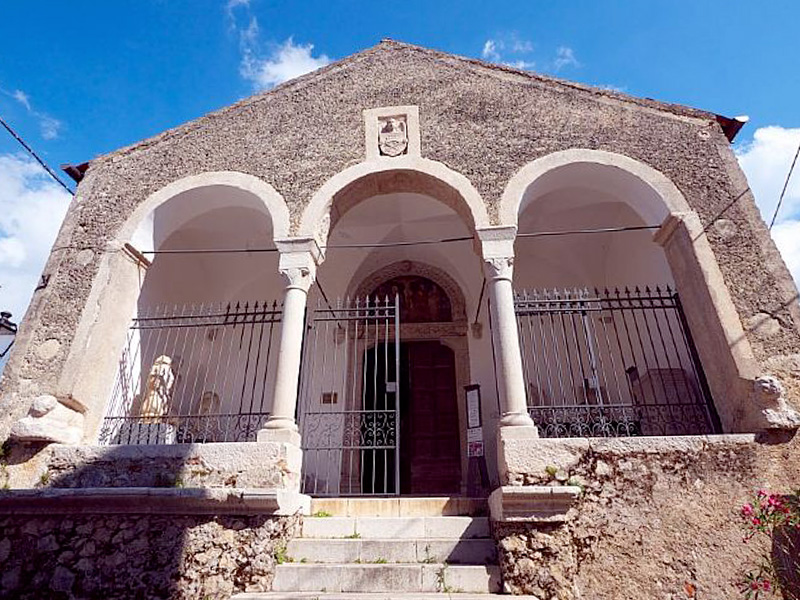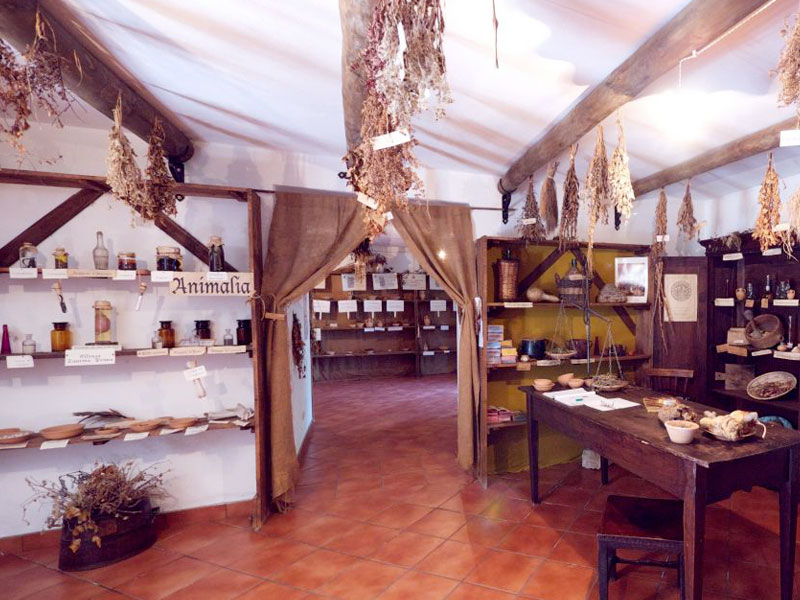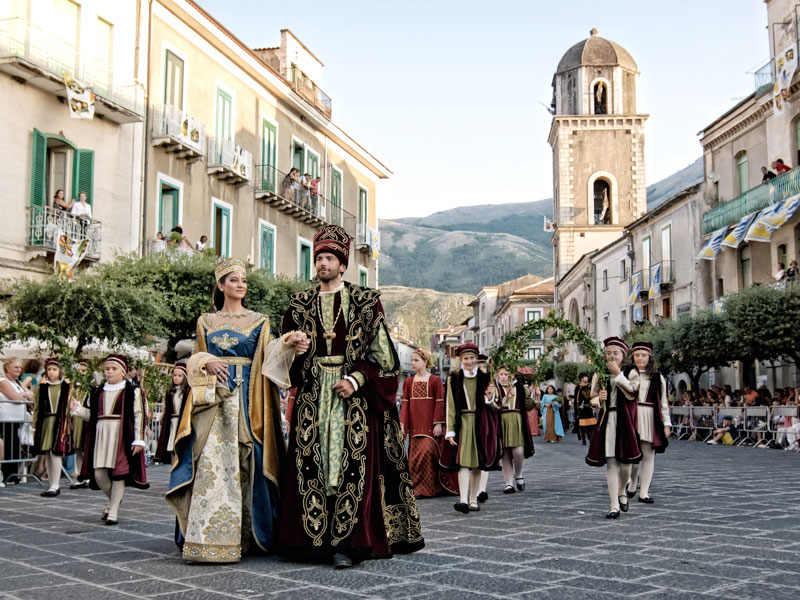The Dream City – Teggiano
Teggiano represents one of the most interesting medieval strongholds resting on a mountain that dominates the valley of the Tanagro. Its position, together with the lanes and streets of stone, give it a special charm and mysterious appearance. It is considered the country of princes: in Norman times, the family Sanseverino, princes of Salerno acquired the feud of Diano – the ancient name of Teggiano. The country has been renowned not only for civil and military prestige over the centuries, but also for its religious splendor, with a significant presence of magnificent churches and convents. Teggiano is considered the city of art and the heritage of the UNESCO.
The Church – The Monastery of SS. Pietà – Teggiano
This monastery dates back to the fourteenth century era, and was later transformed into the convent of the Friars Minor. A portico with Renaissance elements characterizes the exterior. Semi-columns leaning on lions frame the suggestive ‘lunette’ depicting the “Compassion” which enriches a meticulously carved portal. The interior has a single nave is rich in works of art among which interesting sculptures, attributed to Giovanni da Nola.
Cathedral of Saint Maria Maggiore – Teggiano
Dating back to the first centuries of Christianity, the building has been subjected to several restoration works that have modified it from its original structure. Today, on the high altar it is possible to admire a wooden sculpture of the Assunta. In the left nave is the chapel dedicated to Saint Cono, the patron saint of Teggiano and his preserved relics. The Church has other works of considerable prestige as the two wooden angels on the wall of the apse.
The Church – The Convent of Saint Francis – Teggiano
The construction of the Church and the convent goes back to the first years of the fourteenth century, which is confirmed by the inscription on the stone above the doorway. With the Napoleonic laws of 1808 the monastery was suppressed, so the Church remained the only place open to worship in the French decade. Inside, it is interesting to admire the ceiling painted by an artist from Buonabitacolo, which is preserved and intact today. A recent restoration of the Church has led to the discovery of valuable frescoes of the school of Giotto depicting the history of Saint Francis.
The Diocesan Museum – Teggiano
Risen in the deconsecrated church of San Pietro, the museum was born with the function of collecting sculptures and architectural finds dating back to the period between the Roman Age and the 18th century, coming from the territory’s of Teggiano. Since the 80’s, the Museum has undergone restoration works. Today, it is enriched by works of artistic and historical archaeological finds, relics and frescoes, paintings and sculptures attributable to renowned artists.
The Museum of Herbs – Teggiano
Located in the heart of the historic center, this original museum represents a culmination of studies spanning centuries of natural therapeutic practices using herbs. The entire exposition is characteristic of a herbarium with over 700 plant species, selected and divided according to type. In the museum, you also can observe the instruments used in ancient times for the processing of herbs. The exhibition continues in the outer part where they were cultivated plants typical from the Vallo di Diano.
The Table of Princess Costanza – Teggiano
This event is known throughout the Valley of Diano as the most spectacular and prominent. “The Table of Princess Costanza” is the medieval festival celebrated every year in mid-August in Teggiano to recall the historic event of the marriage between Antonello Sanseverino, the Prince of Salerno and Lord of Diano and Costanza, daughter of the Duke of Urbino. For the occasion, the Macchiaroli Castle hosts the re-creation of the medieval ceremony and theater performances. Flag-wavers, tamburine minstrels, and jugglers accompany visitors in a wonderful historical trip back in time through which you can also enjoy delicious local cuisine with dishes of the territory served in reminiscent taverns.


